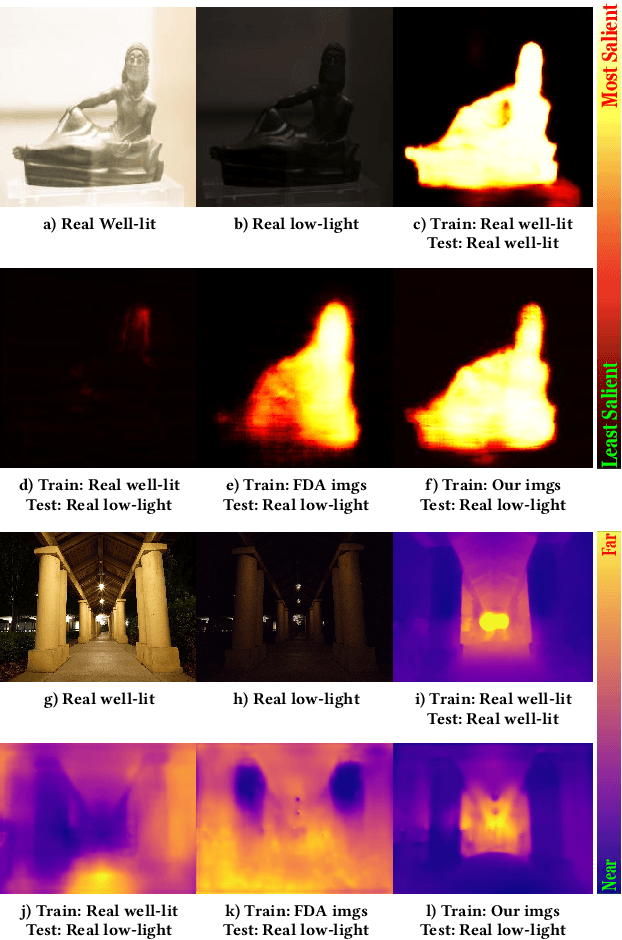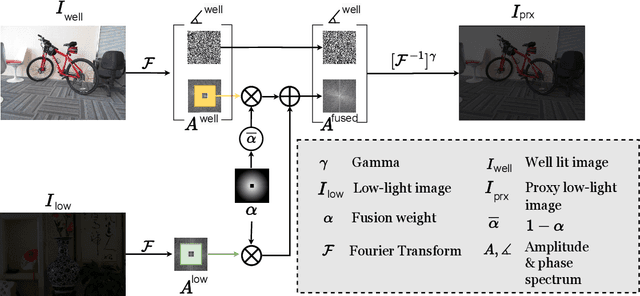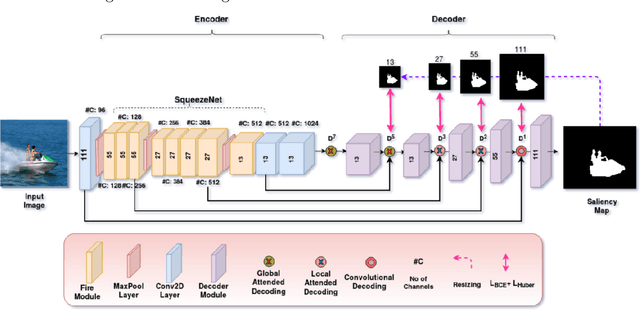Kitty Varghese
Spectrum-inspired Low-light Image Translation for Saliency Detection
Mar 17, 2023



Abstract:Saliency detection methods are central to several real-world applications such as robot navigation and satellite imagery. However, the performance of existing methods deteriorate under low-light conditions because training datasets mostly comprise of well-lit images. One possible solution is to collect a new dataset for low-light conditions. This involves pixel-level annotations, which is not only tedious and time-consuming but also infeasible if a huge training corpus is required. We propose a technique that performs classical band-pass filtering in the Fourier space to transform well-lit images to low-light images and use them as a proxy for real low-light images. Unlike popular deep learning approaches which require learning thousands of parameters and enormous amounts of training data, the proposed transformation is fast and simple and easy to extend to other tasks such as low-light depth estimation. Our experiments show that the state-of-the-art saliency detection and depth estimation networks trained on our proxy low-light images perform significantly better on real low-light images than networks trained using existing strategies.
SaLite : A light-weight model for salient object detection
Dec 08, 2019



Abstract:Salient object detection is a prevalent computer vision task that has applications ranging from abnormality detection to abnormality processing. Context modelling is an important criterion in the domain of saliency detection. A global context helps in determining the salient object in a given image by contrasting away other objects in the global view of the scene. However, the local context features detects the boundaries of the salient object with higher accuracy in a given region. To incorporate the best of both worlds, our proposed SaLite model uses both global and local contextual features. It is an encoder-decoder based architecture in which the encoder uses a lightweight SqueezeNet and decoder is modelled using convolution layers. Modern deep based models entitled for saliency detection use a large number of parameters, which is difficult to deploy on embedded systems. This paper attempts to solve the above problem using SaLite which is a lighter process for salient object detection without compromising on performance. Our approach is extensively evaluated on three publicly available datasets namely DUTS, MSRA10K, and SOC. Experimental results show that our proposed SaLite has significant and consistent improvements over the state-of-the-art methods.
 Add to Chrome
Add to Chrome Add to Firefox
Add to Firefox Add to Edge
Add to Edge